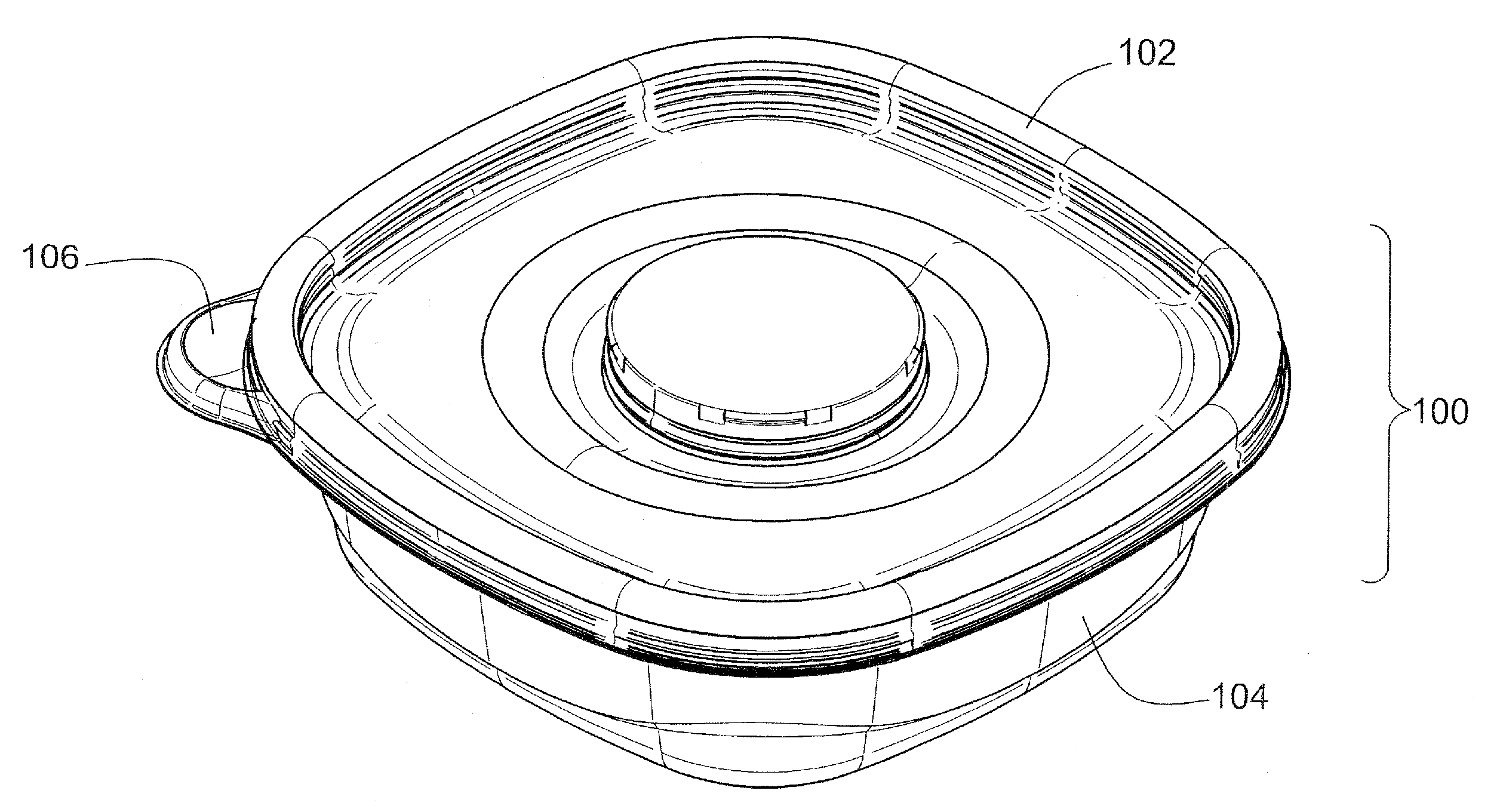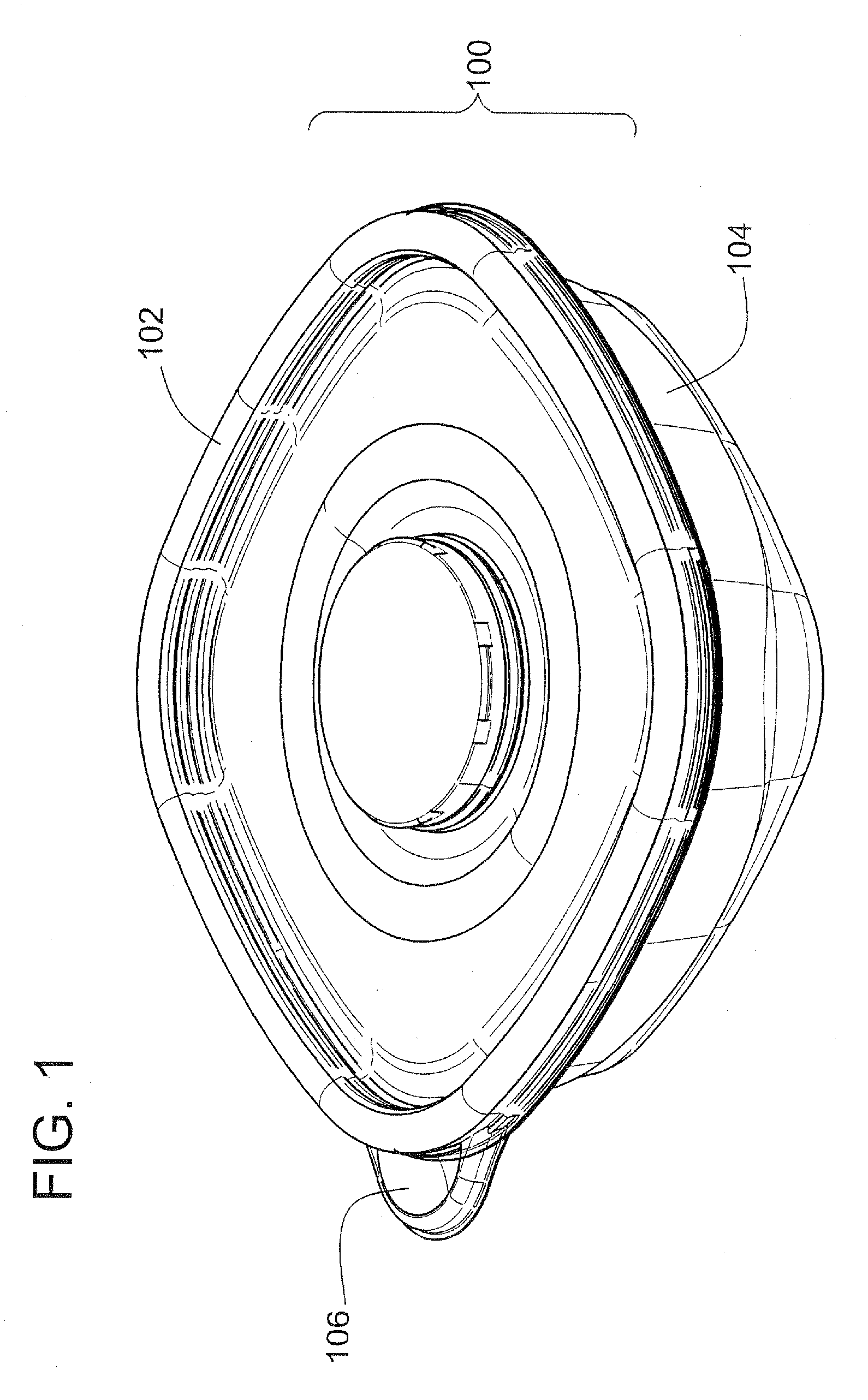Container
a container and storage technology, applied in the field of containers, can solve the problems of occupying a great deal of space in unused containers, difficult to find a matching base and cover in a disorganized drawer, and still be difficult to match a base with a cover
- Summary
- Abstract
- Description
- Claims
- Application Information
AI Technical Summary
Benefits of technology
Problems solved by technology
Method used
Image
Examples
Embodiment Construction
[0033] Turning to the drawings, wherein like reference numerals refer to like elements, a first embodiment of the present invention is illustrated in FIGS. 1 through 5. A container 100 includes a flexible cover 102 sealingly engaged to a base 104. In the example of FIGS. 1 through 5, the container 100 is depicted as substantially square with rounded corners. In other embodiments of the present invention, the container 100 has other shapes such as rectangular, circular, or elliptical.
[0034] The container cover 102 can include at least one gripping tab 106 to facilitate removal of the cover 102 from the container base 104. In some embodiments, the gripping tab 106 includes one or more cross-ribs or a textured surface to improve a user's grip on the tab 106.
[0035] The container cover 102 illustrated in FIGS. 2 and 3 includes an engagement portion 200 that allows the cover 102 to engage with the engagement portion 200 of a second cover 102 to form a locked stack of covers 102. This lo...
PUM
 Login to View More
Login to View More Abstract
Description
Claims
Application Information
 Login to View More
Login to View More - R&D
- Intellectual Property
- Life Sciences
- Materials
- Tech Scout
- Unparalleled Data Quality
- Higher Quality Content
- 60% Fewer Hallucinations
Browse by: Latest US Patents, China's latest patents, Technical Efficacy Thesaurus, Application Domain, Technology Topic, Popular Technical Reports.
© 2025 PatSnap. All rights reserved.Legal|Privacy policy|Modern Slavery Act Transparency Statement|Sitemap|About US| Contact US: help@patsnap.com



